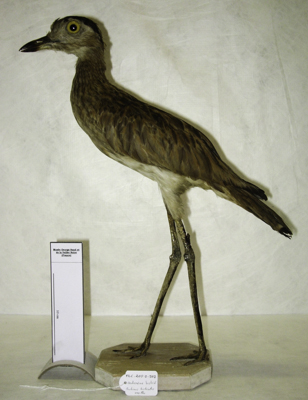In 1838, Ferdinand Joseph L’Herminier, a French botanist and zoologist born in Basse-Terre, Guadeloupe, published the first description of the Double-striped Thick-knee (vocifer), today known by the scientific name Burhinus bistriatus vocifer [1]. L’Herminier used six specimens to describe the species, which he originally named Ædicnemus vocifer. One of the specimens that L’Herminier used for his description is housed in the Baillon Collection at the Musée George Sand et de la Vallée Noire, La Châtre, France.
Continue reading







